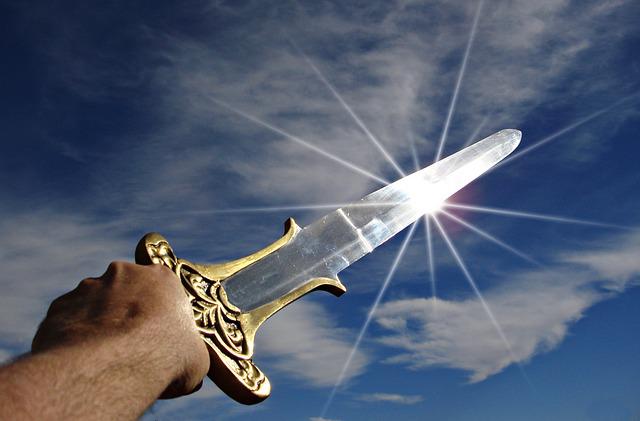Do you have blurbs for your book?
If you’re like most writers, you’re already groaning.
We work super hard writing, editing, and publishing the book. The last thing we want to do is go begging people to read it and say good things about it.
Asking for Book Blurbs: You Can Do It!
But there’s no doubt that a good blurb (or more than one), can elevate your book’s status enough in a potential reader’s mind to push them to buy it—when they might not have, otherwise.
“There are more than 500,000 books published each year in the US alone,” writes bestselling author Tucker Max. “How is a potential reader supposed to know that yours is actually good? How are they supposed to know that you and your book are worth their time and money?…Blurbs are a great way to ‘credential’ a book (and more importantly in many cases, an author as well) and help it stand out from the field.”
I’ve published six books so far with another on the way. But I’ve only reached out for blurbs for the last two. I just hate bothering people, as most of us do.
It was tough, but through the process, I learned a lot. If you want to get blurbs for your new book, consider these five tips.

1. When Getting Blurbs for Your Book, Embrace the Awkwardness
Yes, it’s awkward. It’s hard. It’s uncomfortable.
If you’re feeling all these emotions, you’re normal. All authors feel them. The trick is to feel them and go ahead with your quest for blurbs anyway.
What helps is having a strong “why” for doing it. Of course, everyone wants their books to do well. But you need a little more than that to get over the awkwardness of asking for blurbs.
Maybe you’ve reached a point in your career where you know it’s time to step up your marketing efforts. Maybe you, like me, are working with a publisher you like and want to do your part to sell books. Or maybe this story has a special place in your heart and you want to do everything you can to make sure it’s not ignored.
Whatever your reasons may be, focus on those as you prepare to send out your requests. It will help you move forward despite any negative emotions you may feel.
2. To Get Blurbs for Your Book, Create a List
My publisher asked me to create a “wish list” of people I’d like to get blurbs from.
I’d never done that before, and it was a great first step as it allowed me to dump the pressure of actually asking for those blurbs and to just imagine who I’d like to say “yes.”
Don’t hesitate to start big. You’d love Stephen King, Margaret Atwood, or Lee Child to blurb your book. Put them down. At this point, you’re dreaming. It’s fine. Just get started.
Expand Your Thinking
Then, after you get a few names down, expand your thinking. Who has a good reputation and may be willing to read your work? Usually, these are people with whom you have some sort of personal connection.
Maybe you networked with them at a conference or workshop. Perhaps you regularly interact with them on social media. Maybe you have mentors or past instructors who would like to see you succeed.
Remember that just anyone won’t work. Getting a blurb from your friend, for instance, may be fairly easy, but it’s unlikely to sway a reader.
You need people who have credentials that can uplift you and your work. Either they are bestselling authors themselves, or they’ve won writing awards, or they’ve written popular books that are similar to yours.
As you think of names, write them down. Look up the websites and contact information. Include a few notes about how you know the person, when you connected with them, and what you admire about them and their work. (Another good thing about this exercise—it reveals to you once again the importance of networking!)
The more you add to your list, the more names you’ll likely think of to add. Give your brain a few days to noodle over the question: Who have I connected with who may be willing to read my book and give me a blurb?

3. Dig Deeper
It’s at this stage that you can start to hit gold.
You may have started your list with celebrity authors. But as we all know, these are the least likely to read your work. Many don’t even provide a contact page or email because if they did, they’d be inundated with requests.
Move to those who are more likely to want to help you. Here’s where you need to dig a little deeper.
We often tend to overlook those people with whom we interact more regularly, not realizing that perhaps they are bestselling authors, were nominated for a Pushcart or other prize, or have stunning resumes depicting their experience in the literary world.
These are people much more likely to say “yes” to a blurb request, and who can look just as impressive on a book cover or inside page. So go through your social contacts list, think back to the workshops you attended, scan your Twitter feed, and see who you can add to your list.
4. To Get Blurbs for Your Book, Create Your Request
Now it’s time to create your actual request. I’d recommend you do this on a separate document first to relieve the pressure of actually having to send it to anyone. Feel free to address it to the first person on your list, but refrain from sending it just yet.
Start with a reminder of your connection. Maybe this person taught a class you enjoyed at a workshop or you met them at a conference and traded writing stories.
Or you could be connected on Facebook and have appreciated their support of your posts. Maybe you read a book of theirs and loved it.
It’s important to acknowledge the connection, but don’t spend more than a few lines on it. Remember that people are busy, so don’t beat around the bush. Get to your request.
Next, let them know that you’re writing because you’re seeking a blurb for your new book. State the title, publication date, and publisher (if you’re self-publishing, that’s fine), and the reason you’re seeking blurbs. Maybe you’ve published books before, and you want to step it up with this one. Or you have a new publisher, or this book is really important to you, or whatever it is.
Then, let them know that you understand the nature of your request. People are busy and want to know that their time is valued. State that clearly, let them know you understand either way, and that you appreciate their consideration.
Finally, give them the date by which you need the blurb if they decide to read your work, let them know you look forward to hearing from them, and close. Feel free to add more information as a post-script, such as the synopsis and the web address where the person can find more information on the book.
Let the invitation sit for a day or so, look it over again, then if all looks good, start sending it out. (If you’re traditionally published, your publisher may help you do this, particularly for bigger-name authors.)

5. To Get Blurbs for Your Book, Hang In There
It’s important at this point to be ready for rejections.
There’s that word again! We writers always have to be prepared for rejections.
I was really pleased to end up with a pretty even split between the “no” and “yes” responses. Most of the celebrity-level authors, even though I had met them personally, didn’t respond, which was to be expected. Other authors were dealing with illnesses and other challenges that made focusing on the book impossible. One enthusiastically agreed and then had to bow out because her elderly mother took seriously ill.
“Furthermore, a lot of the time you are asking this of writers who aren’t your friends,” writes Gabino Eglesias for Lit Reactor, “which makes it that much harder… and easier for them to say no.”
These rejections can be discouraging. You can begin to feel that you won’t be able to find anyone to help you out. After all, most of us know only so many people who could add the credibility to our books that we need.
Hang in there. Be polite and understanding, and never burn bridges. You never know when you may interact with these folks again.
Then, keep your mind open. Sometimes after receiving a rejection, you may think of someone else you could ask. Just be sure they have the credentials you need, and take care to personalize each invitation.

To Get Blurbs for Your Book—Be Brave!
In the end, it’s best to have at least twice as many names on your list as blurbs you need.
“You need three to five blurbs for the book cover,” writes Amy Fish for Submittable. “Let’s assume that about half the people will say yes. This means that you should plan on asking at least ten people to start. The wider the net you cast, the less a ‘no’ will sting.”
For those yes responses you do receive, make sure you have free copies of your book available—both e-files and print copies. You want to accommodate your reader as much as you can.
Give them at least a month to read and get back to you (more if possible), and when you do get the blurb, take the time to write a thank-you note. You may also want to send the person some book swag and a free book (particularly if their quote appears in it).
I learned a lot through this process and I’m really glad I pushed myself to do it. I was really touched by those people who agreed to read my work, and even more grateful for the blurbs they wrote.
Best of all, now that I’ve been through the process once, I know I can do it again.
How about you?
Have you secured blurbs for your book? Tell us how you did it.


Great, superbly detailed advice, Colleen. I can attest to it since I went through most of those same steps — and rejections! Perseverance is key here.
Thanks, Joanne! I know you did. It was great to hear your take on the process. (Check out Joanne’s post here: https://writingandwellness.com/2022/03/23/great-writing-tips-from-a-25-year-veteran-of-the-writing-world/) And yes, like every area of the writing life right? Perseverance! :O)
I did everything for my first book (only on the second now. A friend had written a non-fiction book that I had actually used for research. The big one for me was an author I loved, an old timer. That book wasn’t about my subject, but I was leading a book club with one of her older ones that did relate. At first she couldn’t do it in time, because of teaching in a college. Then: yay!–she wrote that it rained a day when she couldn’t ;work in her garden; read it; and sent a wonderful blurb. Of the few I got, each had an individual ask. Whew. But it was great. A fellow writer, who had a semi related book out, volunteered, I wrote so many others, even a museum book store that said no.
But again, a huge undertaking but worth it.
Thanks for sharing your experience, Marion. It’s great to hear that some people came through for you. I think what you did is key—ask many and hope for some positive responses. Appreciate you chiming in! :O)